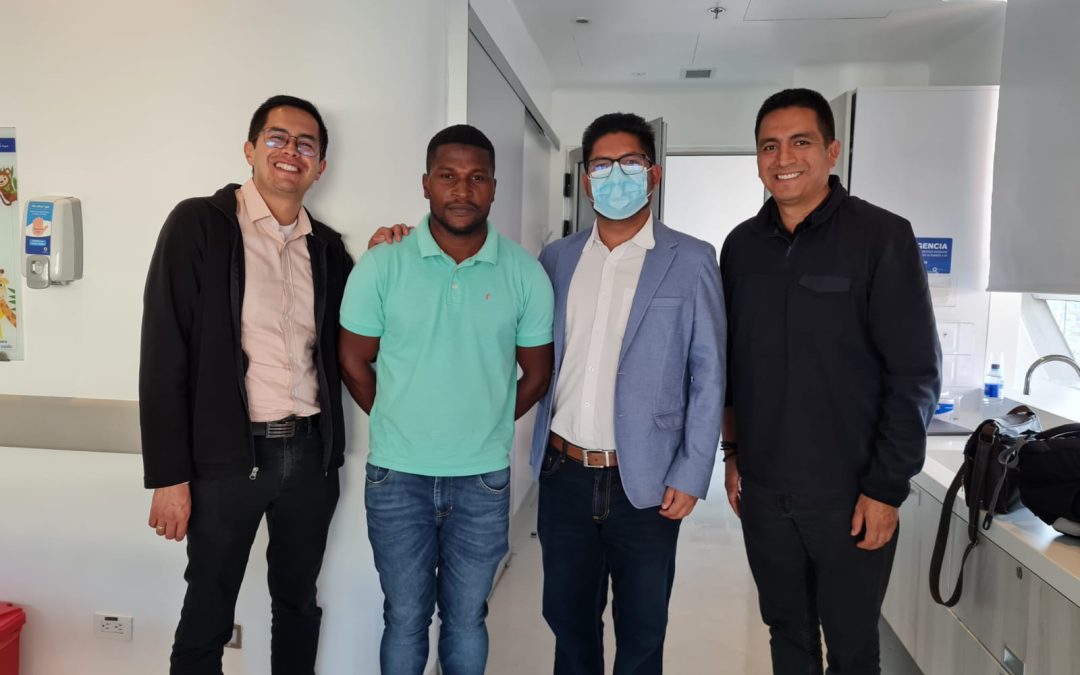Not even a hospital stay could prevent Br. Luis Pedroza, CSV, from renewing his vows as a Viatorian brother. Three years to the day after he professed first vows, at Colegio San Viator in Tunja, Br. Pedroza renewed his vows for another three years.

Br. Luis Pedroza renews his vows for another three years.
The intimate vow ceremony took place at Santafé Foundation Clinic in Bogotá, where he had been treated for a health condition. Fr. Fredy Contreras, CSV, who has accompanied Br. Pedroza during his formation and serves as the local superior in Tunja, received his vows. Also there supporting Br. Pedroza were his confreres, Br. Juan David Ramirez, CSV and Br. Juan Carlos Ubaque, CSV.
Br. Pedroza, who is 29, was released from the hospital later that day and he returned to Tunja, where he lives with the local Viatorian community there.
Currently, Br. Pedroza is studying physical education at the University of Santo Tomas in Tunja. When his schedule permits, Br. Pedroza helps out with Physical Education classes and activities at the colegio.
“He is becoming acquainted with the educational community and at the same time learning to be a Viatorian teacher,” Fr. Contreras says.

(L-R) Fr. Fredy Contreras, Br. Pedroza and Br. Juan Carlos Ubaque
Br. Pedroza’s discernment started when he spent two years as a pre-novice in Tunja. He then spent a year year of formation at the Viatorian Novitiate run by the Latin American and Caribbean Council in Puente Alto, Chile, under the direction of Fr. Eduardo Millán, CSV. This same international Novitiate welcomed another Colombian, Br. Carlos Suarez, earlier this month. He now begins his year of formation, under the guidance of Fr. Millán.
Fr. Mark Francis, CSV, Provincial, of Viatorians in this country and in Colombia calls this steady stream of vocations in Colombia, a blessing.
“We have been blessed in recent years with vocations like those of Luis Pedroza,” Fr. Francis says, “who have opened up the foundation in Colombia to people from many parts of the country: Chocó, Cúcuta, as well as Boyacá and Cundinamarca.”

